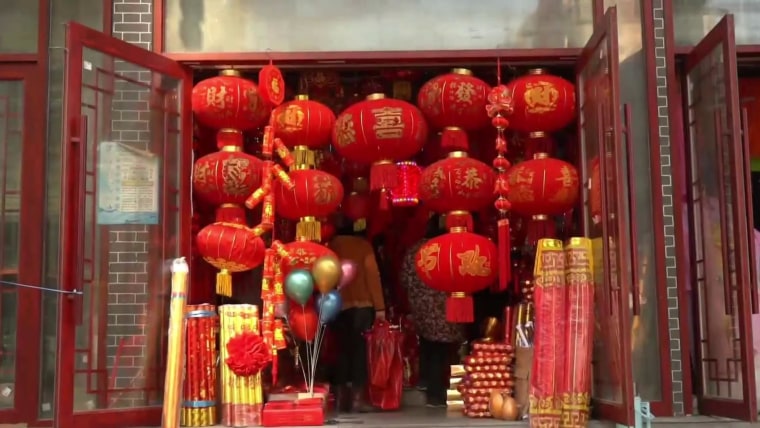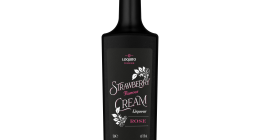In recent decades, a new pattern has emerged in the luxury retail world: In late December, many of the world’s most valuable brands will unveil exclusive lines of merchandise covered in Chinese cultural symbols, one of a dozen animal zodiac signs, the color red or all of the above.
Marketing for this Lunar New Year, which falls on Friday, is no different.
Nike, for instance, remixed its high-top sneakers with graphics of popping firecrackers and artisanal Chinese knots. Apple offered limited-edition AirPods Pros with ox emojis stamped on the cases. The Swiss boutique Vacheron Constantin, meanwhile, dropped $130,000 watches with high-relief engravings of the animal.
Compared to those from past holiday seasons, the Year of the Ox capsule collections haven’t drawn as much mockery or as many boycotts from Asian consumers. But the commercialization of Lunar New Year still raises long-standing questions within the Asian diaspora about the co-opting and whitewashing of ethnic traditions — and whether mainstream recognition can bring about meaningful social change.
The commodification of Lunar New Year — also known as Chinese New Year or Spring Festival — by Western brands began in the early 1990s, when China grew into an economic powerhouse with an emergent middle class who saw opulence as a status symbol, said Min Zhou, director of the Asia Pacific Center at UCLA.
“It’s part of broader trends of consumerism, commercialization and globalization” unfolding at the time that weren’t “unique to the Chinese or Chinese New Year,” she said, noting the transformation of other major cultural holidays, like Christmas and Thanksgiving, into shopping bonanzas.
Today, China is the most important market for high-end Western retailers. In 2018, Chinese shoppers bought one-third of the world’s luxury goods, and the country is on track to become the world’s largest apparel market by the end of the decade. The spending swells over Lunar New Year: Consumers spent $149 billion during the weeklong break in 2019, according to the Chinese Commerce Ministry. Across the U.S. and the U.K., releases of Lunar New Year luxury products rose by 75 percent from 2019 to 2020, according to the retail market intelligence platform Edited.
The aggressive courting of Chinese shoppers by U.S. retailers can distort how non-Asians see Asian Americans by reinforcing the model minority myth, said Chiou-Ling Yeh, author of “Making an American Festival: Chinese New Year in San Francisco’s Chinatown.”
The marketing and ads blitz by luxury brands often “conflates Chinese buyers with Chinese Americans and Asian Americans,” she said, adding that it also bolsters the stereotype that all Asians are successful, wealthy and materialistic.
Yeh said the purchasing power of the Chinese middle class doesn’t accurately reflect the financial status of Asians overseas. And the China-centric aesthetics of Lunar New Year collections — zodiac animals as a chief design motif, Chinese celebrities as leads in ads — overlook the many other ethnic groups that celebrate the holiday both in Asia and in the U.S., including Singaporeans, Vietnamese and Koreans.
The misconceptions, she said, can be particularly harmful when anti-Asian hate crimes are soaring and Asian Americans are experiencing some of the biggest job losses among all racial groups.
When big brands monetize ethnic traditions, they risk misinterpreting or flattening the cultural practices that make the events distinct and emotionally resonant, said the historian Jack Tchen, a co-founder of the Museum of Chinese in America. While exchanging gifts is a cherished Lunar New Year ritual, an ever-growing pool of luxury capsule collections can erode the purpose of the holiday — which has little to do with acquiring coveted garments and jewelry.
“The tragedy would be if the goods became the replacement for the actual experience of what Lunar New Year is about, which is family and friends getting together, eating together, being mindful of ancestors,” he said. “It’s a time when people can really relax no matter how much they work or how little money they have.”
Should commercial culture overtake these “deep traditions,” he said, the seminal Asian festival could come to resemble Christmas: a holiday that has been so thoroughly commodified that its original religious significance is now largely lost on the masses.
In the past few decades, government agencies have made a greater effort to honor the occasion in culturally sensitive ways. Since 1992, the U.S. Postal Service has commissioned three 12-year Lunar New Year stamp series, featuring artwork by Asian American illustrators. The new Year of the Ox stamp pays tribute to the whimsical masks used in traditional dragon and lion dances.
But as awareness of the event grows among non-Asians, it has ironically become harder, in some ways, for Asian Americans to observe certain traditions. Lunar New Year, unlike Thanksgiving or Christmas, isn’t a federal holiday, which makes it difficult for many families to get together and celebrate. (Recently, a handful of public school districts across the U.S. have agreed to give students the day off.)
In addition, Zhou said, the intense pressure to assimilate into American culture has caused younger Asian Americans to lose touch with some age-old customs, like worshipping the Kitchen Gods and composing Spring Festival couplets.
“Family connections are often disrupted through immigration, and the second generation gradually forgets about these traditional holidays in their parents’ homelands,” she said. “So the rituals they pick up, like red envelopes, lantern festivals and lion dances, are more symbolic.”
But there are also upsides to the commodification of Lunar New Year, Zhou said. It has boosted mainstream Asian representation and general awareness of Asian culture while pushing corporations to re-examine their biases. Online backlash against racist and insensitive Lunar New Year collections, for instance, have forced some companies to withdraw campaigns. On the other hand, commercials that emphasize storytelling over product promotion — like Nike’s widely praised 2020 ad depicting the red envelope tug-of-war between family members — can enrich the public’s understanding of long-standing traditions.
Since last summer’s racial justice protests, corporations that profit from ethnic cultures have faced growing pressure to more proactively invest in those communities by collaborating with local groups, sponsoring cultural events and hiring more diverse workforces.
As the coronavirus pandemic forces Asian American communities to cancel parades, dances and large family reunions for a second straight year, grassroots groups across the country have conceived of thoughtful merchandise and virtual events to raise awareness about Lunar New Year rituals and to support struggling businesses.
The Asian American Arts Alliance created a series of interactive digital projects to explore Lunar New Year customs and mythology, including a red envelope exchange program and a recipe for tikoy, a steamed rice cake made during Chinese Filipino celebrations. Pearl River Mart, a Chinese American specialty goods emporium founded in 1971, put together gift boxes that include an assortment of items like noisemakers to ward off evil spirits and almanacs with household tips and health remedies.
Joanne Kwong, the president of Pearl River Mart, said she welcomes the attention Western brands have lavished on Lunar New Year, as it advances Asian American representation in advertising and pop culture. But, she said, it’s up to Asian-owned businesses and organizations to educate the community about the essence and history behind the holiday.
“For second- or third-generation Asian kids, it becomes more hazy what the traditions are and how to celebrate what everything means,” she said. “We view it as our job to keep these traditions alive.”
Source: | This article originally belongs to Nbcnews.com











